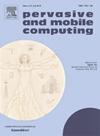基于协同q学习的无人机辅助通信多跳路由
IF 3.5
3区 计算机科学
Q2 COMPUTER SCIENCE, INFORMATION SYSTEMS
引用次数: 0
摘要
无人机(UAV)辅助通信作为在灾害管理行动中建立有效应急通信的重要解决方案,正日益受到重视。无人机对于增强和扩展通信系统至关重要,充当中继器,促进数据传输到地面站,扩展网络覆盖范围,并提供连接。然而,空中网络的动态性和资源有限性需要强大的路由机制来促进无缝数据传播。虽然现有的基于q学习的路由协议可以适应不断变化的网络条件,并且能够适应故障,但由于无人机独立运行,每个无人机的收益最大化,它们通常会导致网络范围内的次优决策。针对多无人机网络,提出了一种基于协同q学习的多跳路由算法。据我们所知,这是路由算法首次通过消息传递方案的效用函数近似引入无人机协调数据路由,从而实现全局最优联合动作的选择。这种新颖的方法仔细考虑了数据路由的一组综合参数,包括最小化到目的地的预期跳数,监控能源使用,维护网络连接,防止无人机碰撞,并支持自适应网络重组。综合考虑多种因素,提出的解决方案优于现有工作,为在动态、资源受限环境(如紧急情况)下的无人机辅助通信提供了一种独特、强大和高效的策略。CQMR建立并扩展了基于改进q学习的多跳路由(IQMR)算法,与IQMR相比,能效提高了12.47%,数据传输成功率提高了13.34%,到达目的地所需的跳数减少了40%。本文章由计算机程序翻译,如有差异,请以英文原文为准。
Coordinated Q-learning based Multi-hop Routing for UAV-assisted communication
Unmanned Aerial Vehicle (UAV) assisted communication is gaining prominence as a vital solution for establishing effective emergency communication during disaster management operations. UAVs are essential for enhancing and expanding communication systems, acting as relays to boost data transmission to ground stations, extend network coverage, and provide connectivity. However, the dynamic and resource-limited nature of aerial networks necessitates robust routing mechanisms to facilitate seamless data dissemination. While existing Q-learning-based routing protocols are adaptive to changing network conditions and resilient to failures, they often lead to suboptimal network-wide decisions due to UAVs operating independently, each maximizing its gains. This paper proposes a novel Coordinated Q-learning-based Multi-hop Routing (CQMR) algorithm for multi-UAV networks. To the best of our knowledge, this is the first time a routing algorithm introduces UAV coordination for data routing through utility function approximation with a message-passing scheme, enabling the selection of globally optimal joint actions. This novel approach meticulously considers a comprehensive set of parameters for data routing, including minimizing the expected number of hops to the destination, monitoring energy usage, maintaining network connectivity, preventing UAV collisions, and supporting adaptive network reorganization. This integrated consideration of multiple factors positions the proposed solution as superior to existing work, offering a uniquely robust and highly effective strategy for UAV-assisted communication in dynamic, resource-constrained environments, such as emergency scenarios. CQMR builds upon and extends the Improved Q-learning-based Multi-hop Routing (IQMR) algorithm, demonstrating a 12.47% increase in energy efficiency and a 13.34% higher success rate in data transmission compared to IQMR while requiring 40% fewer hops to reach the destination.
求助全文
通过发布文献求助,成功后即可免费获取论文全文。
去求助
来源期刊

Pervasive and Mobile Computing
COMPUTER SCIENCE, INFORMATION SYSTEMS-TELECOMMUNICATIONS
CiteScore
7.70
自引率
2.30%
发文量
80
审稿时长
68 days
期刊介绍:
As envisioned by Mark Weiser as early as 1991, pervasive computing systems and services have truly become integral parts of our daily lives. Tremendous developments in a multitude of technologies ranging from personalized and embedded smart devices (e.g., smartphones, sensors, wearables, IoTs, etc.) to ubiquitous connectivity, via a variety of wireless mobile communications and cognitive networking infrastructures, to advanced computing techniques (including edge, fog and cloud) and user-friendly middleware services and platforms have significantly contributed to the unprecedented advances in pervasive and mobile computing. Cutting-edge applications and paradigms have evolved, such as cyber-physical systems and smart environments (e.g., smart city, smart energy, smart transportation, smart healthcare, etc.) that also involve human in the loop through social interactions and participatory and/or mobile crowd sensing, for example. The goal of pervasive computing systems is to improve human experience and quality of life, without explicit awareness of the underlying communications and computing technologies.
The Pervasive and Mobile Computing Journal (PMC) is a high-impact, peer-reviewed technical journal that publishes high-quality scientific articles spanning theory and practice, and covering all aspects of pervasive and mobile computing and systems.
 求助内容:
求助内容: 应助结果提醒方式:
应助结果提醒方式:


